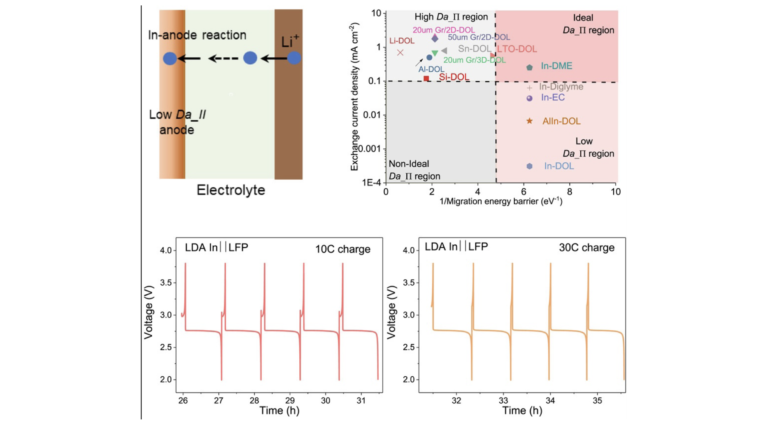Researchers at Cornell University in New York have developed a new lithium battery with rapid charging capabilities, completing a full charge in under five minutes. The team have presented their work in a paper titled Fast-charge, long-duration storage in lithium batteries, published in the journal Joule. They also suggest that the batteries maintain stable performance over numerous charging and discharging cycles.
The research received support from the US Department of Energy Basic Energy Sciences Program through the Center for Mesoscale Transport Properties and made use of resources from the Cornell Center for Materials Research, funded by the National Science Foundation’s Materials Research Science and Engineering Center program.
By focusing on electrochemical reaction kinetics, the researchers used a chemical engineering concept called the Damköhler number to study the battery’s performance. They identified indium as a promising anode material due to its rapid solid-state transport rates, critical for fast-charging batteries. Indium, commonly used in touchscreen displays and solar panels, exhibits low migration energy barriers and moderate exchange current density, facilitating rapid ion diffusion and efficient surface reactions essential for quick charging and long-term storage.
Although this technology, coupled with wireless induction charging on roadways, could reduce battery size and costs, making electric transportation more feasible, challenges remain regarding the practicality of indium anodes.
“The key innovation is we’ve discovered a design principle that allows metal ions at a battery anode to freely move around, find the right configuration and only then participate in the charge storage reaction,” said Lynden Archer, one of the paper’s authors. “The end result is that in every charging cycle, the electrode is in a stable morphological state. It is precisely what gives our new fast-charging batteries the ability to repeatedly charge and discharge over thousands of cycles.”
Archer added, “While this result is exciting in that it teaches us how to get to fast-charge batteries, indium is heavy. Therein lies an opportunity for computational chemistry modeling, perhaps using generative AI tools, to learn what other lightweight materials chemistries might achieve the same intrinsically low Damköhler numbers.”
The other authors of the paper are Shuo Jin, Xiaosi Gao, Shifeng Hong, Yue Deng, Pengyu Chen, Rong Yang and Yong Lak Joo.
For more battery technology news, please click here.


